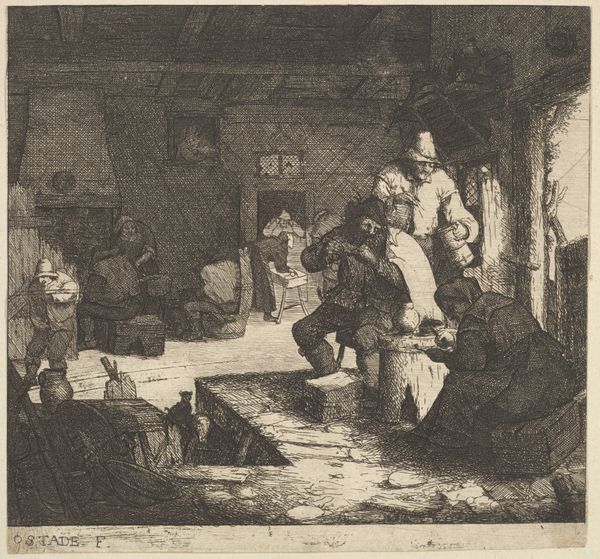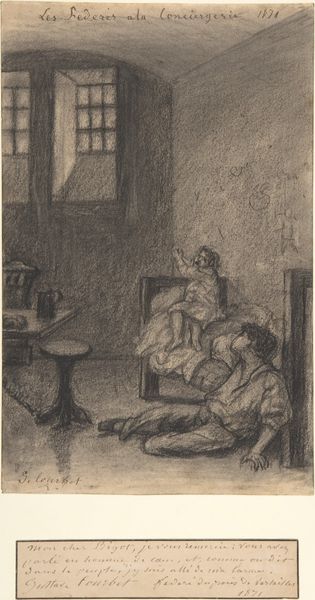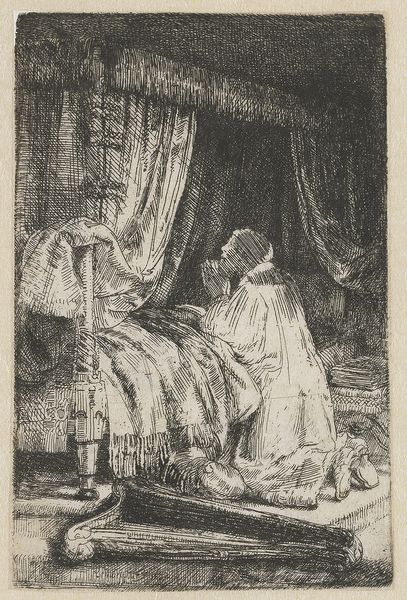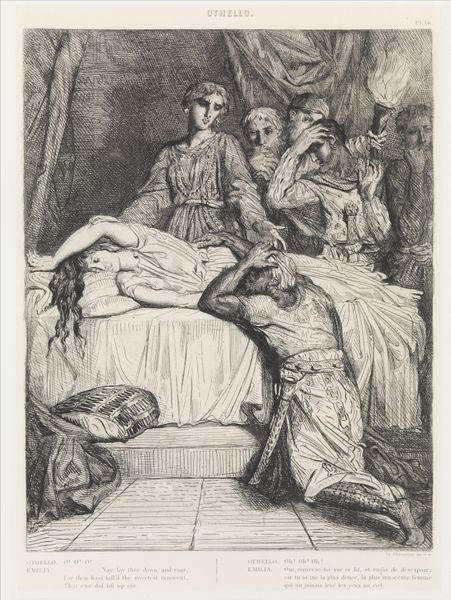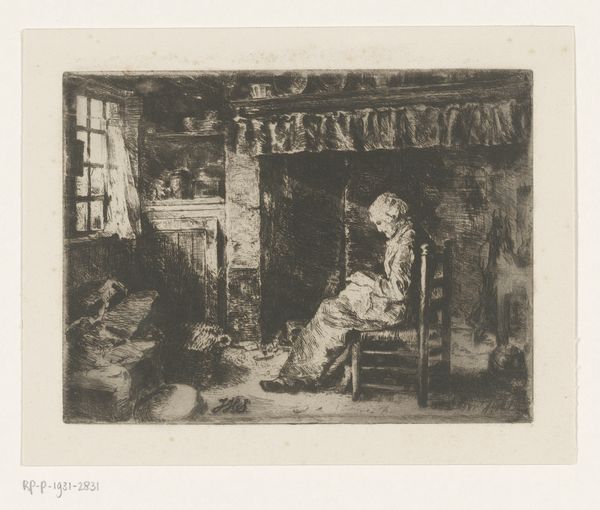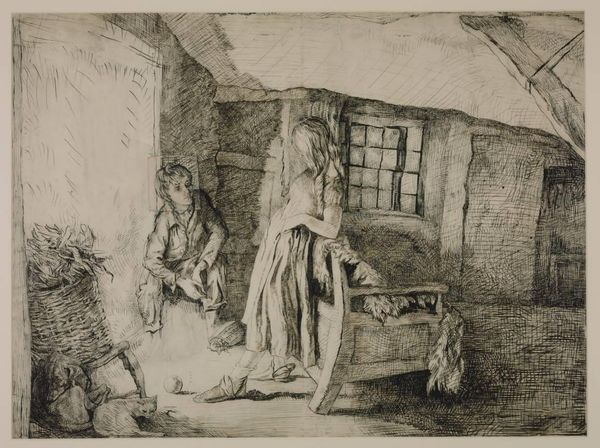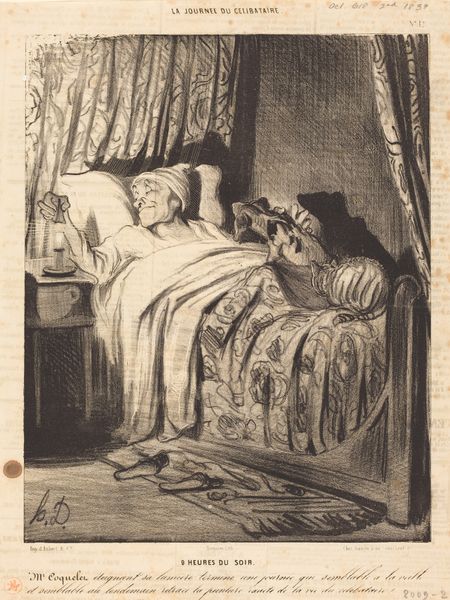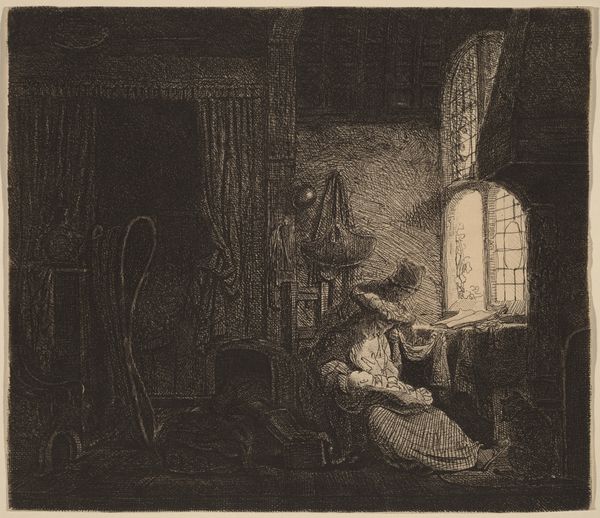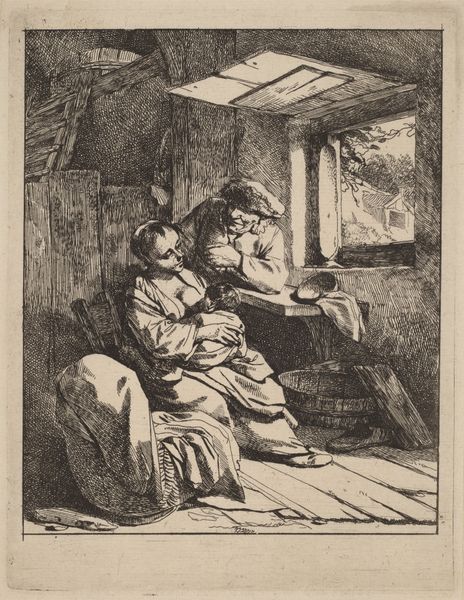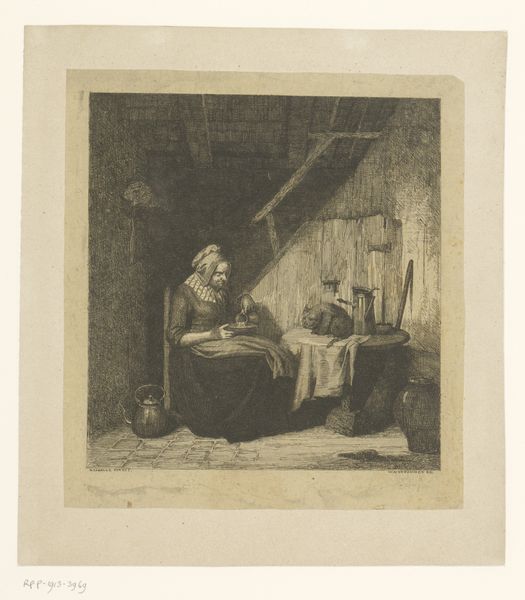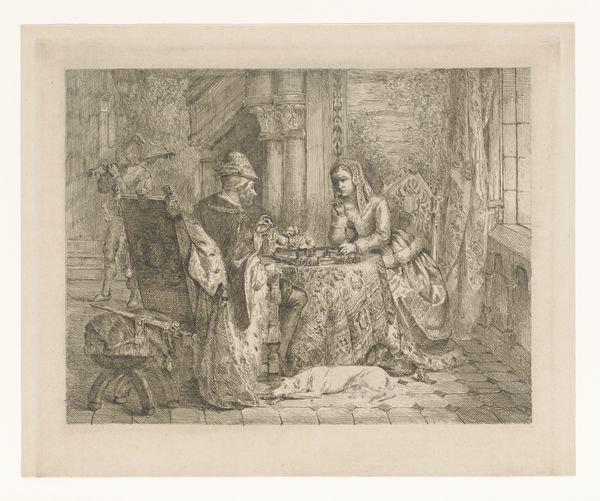
Copyright: National Gallery of Art: CC0 1.0
Curator: Thomas Rowlandson’s etching, "A Bed-warmer," likely created around 1785, depicts a rather chaotic domestic scene. What strikes you initially? Editor: The immediate impression is of asymmetry and tonal imbalance. The frenetic scribbles on the right contrast dramatically with the relative openness on the left. The female figure and her shadowed space compete with the bright disorder of the bed and its occupant. Curator: Indeed. Rowlandson was known for his caricatures and social commentaries. Consider the socio-political context of the late 18th century—the rigid class structures and burgeoning social anxieties are palpable. This print perhaps mocks the societal norms surrounding courtship and domesticity. Editor: Agreed, the scene reads satirically. Focusing on the formal aspects, note how Rowlandson uses varied line weights to suggest depth and texture. The lines describing the bedsheets are dense and chaotic, creating a sense of unease, almost entrapment, within the domestic sphere. Curator: Exactly! And consider the roles assigned. The woman, perhaps a servant or paid companion, attends to the man, highlighting gendered power dynamics prevalent during the era. Her upright posture contrasts with the man’s slouching demeanor, almost suggesting her control. Editor: From a formal perspective, observe the central placement of the figures within the composition, connected only through their shared space and the literal 'bed-warmer.' Yet, the hatching pulls my attention away, back towards the right, and out of this narrative. Curator: Precisely. It begs questions about women's roles, class, and the economy of servitude, issues deeply entrenched in Georgian society. The artwork invites conversations about these social realities and their visual representation. Editor: By drawing attention to these stark relationships of value—the bed-warmer, a token of the woman's service and position— the artist uses compositional arrangement as commentary. The piece doesn’t just represent; it embodies critical tensions. Curator: It’s this convergence of artistry and context, of aesthetics and social realities, that elevates this piece beyond mere illustration, turning it into a significant social document. Editor: Indeed, close analysis combined with an openness to those intersecting narratives is paramount. It enriches our understanding of both the art and its place in history.
Comments
No comments
Be the first to comment and join the conversation on the ultimate creative platform.
